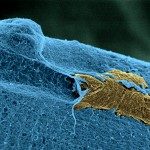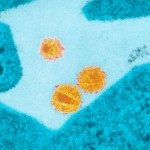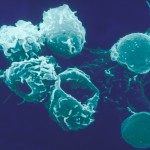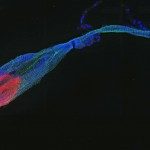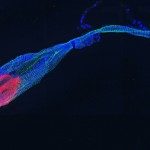Link to Pubmed [PMID] – 23035208
Circulation 2012 Oct;126(15):1882-95
BACKGROUND: Interaction with heparan sulfate proteoglycans is supposed to provide chemokines with the capacity to immobilize on cell surface and extracellular matrix for accomplishing both tissue homing and signaling of attracted cells. However, the consequences of the exclusive invalidation of such interaction on the roles played by endogenous chemokines in vivo remain unascertained.
METHODS AND RESULTS: We engineered a mouse carrying a Cxcl12 gene (Cxcl12(Gagtm)) mutation that precludes interactions with heparan sulfate structures while not affecting CXCR4-dependent cell signaling of CXCL12 isoforms (α, β, γ). Cxcl12(Gagtm/Gagtm) mice develop normally, express normal levels of total and isoform-specific Cxcl12 mRNA, and show increased counting of circulating CD34(+) hematopoietic precursor cells. After induced acute ischemia, a marked impaired capacity to support revascularization was observed in Cxcl12(Gagtm/Gagtm) animals associated with a reduced number of infiltrating cells in the ischemic tissue despite the massive expression of CXCL12 isoforms. Importantly, exogenous administration of CXCL12γ, which binds heparan sulfate with the highest affinity ever reported for a cytokine, fully restores vascular growth, whereas heparan sulfate-binding CXCL12γ mutants failed to promote revascularization in Cxcl12(Gagtm/Gagtm) animals.
CONCLUSION: These findings prove the role played by heparan sulfate interactions in the functions of CXCL12 in both homeostasis and physiopathological settings and document for the first time the paradigm of chemokine immobilization in vivo.
